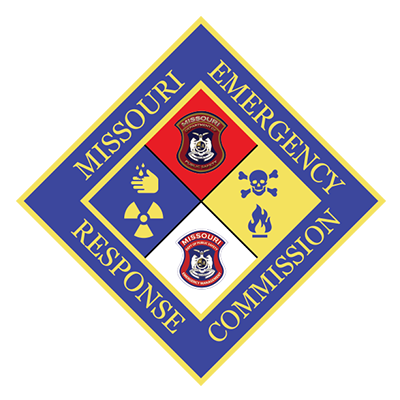Missouri Emergency Response Commission (MERC)
The Missouri Emergency Response Commission’s (MERC) mission is to protect public health and the environment by assisting communities with chemical incident prevention, preparedness, response and recovery and by receiving, processing and reporting on chemical information received under community right-to-know laws.

- 07-31-2025 MERC Meeting Minutes
- 05-15-2025 MERC Meeting Minutes
- 01-23-2025 MERC Meeting Agenda
- 01-23-2025 MERC Meeting Minutes
- 07-18-2024 MERC Meeting Agenda
- 07-18-2024 MERC Meeting Minutes
- 05-31-2024 MERC Meeting Agenda
- 05-31-2024 MERC Meeting Minutes
- 05-22-2024 MERC Meeting Agenda
- 04-12-2024 MERC Meeting Agenda
- 04-12-2024 MERC Meeting Minutes
- 01-11-2024 MERC Meeting Minutes
- 09-21-2023 MERC Meeting Minutes
- 06-06-2023 MERC Meeting Minutes
- 03-02-2023 MERC Meeting Minutes
- 10-27-2022 MERC Meeting Minutes
- 07-28-2022 MERC Meeting Minutes
- 05-27-2021 MERC Meeting Minutes
- FY2022 First Quarter Commission Meeting - July 22, 2021
- FY2022 Second Quarter Commission Meeting - October 28, 2021
- FY2022 Third Quarter Commission Meeting - January 27, 2022
- FY2022 Fourth Quarter Commission Meeting - May 19, 2022
- NEW! Tier II System Log-in and Report Instructions
- NEW! Companies Linking Facility Users
- NEW! Company Users Guide
- NEW! Copying Tier II to New Year
- NEW! Submit and Pay Tier II
- Tier II Website
- Tier II Updates - Fertilizer Retailers
- Tier II Updates - Ice Rinks
- LEPC/D Superfund
- Petroleum Business Certification
- NEW! Filing As a Facility User
- NEW! New Filers
- Fire Department List and Registration
- Explosives Reporting Requirements
- 704 Marking System
- Spill Bill
- EPCRA - How to Comply
- EPCRA (Missouri Revised Statutes, Chapter 292)
